According to You: The worst engines you’ve experienced
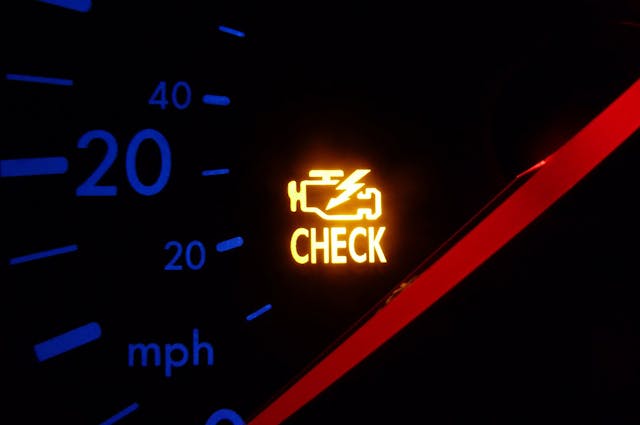
We recently asked about the worst engines you’ve experienced in your lifetime, and you certainly delivered. Perhaps too well, as the responses were overwhelming. How on earth could we cover all the bad engines made over the years? Our solution to this (wonderful) problem was thus: we thinned the herd down to responses that specifically included personal experiences that add a little more value than just the usual re-hashing of the same stories you’ve heard elsewhere.
Let’s get right to it!
The Iron Duke four-cylinder
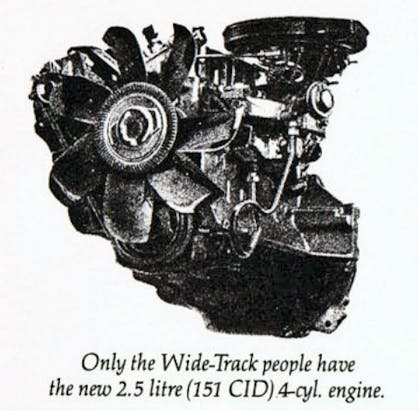
Charles A Parent said that the worst engine he ever owned was a Pontiac Iron Duke that “constantly ate Throttle Position Sensors and cracked the cast iron exhaust manifold three times.”
While the inclusion of TPS sensors suggests it might be the later TECH IV design, combining that with a four-speed shifter “that was prone to locking, in or out of gear” caused him to Lemon Law the car.
VW Type 412 1.8-liter flat-four
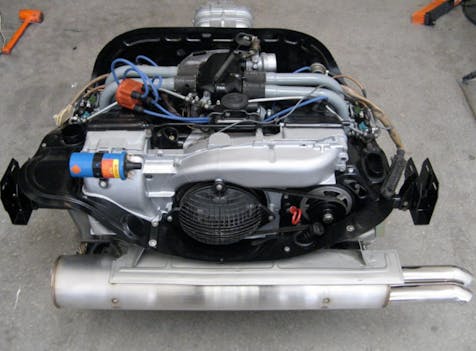
Hagerty Community user lasersailor came in strong with this one:
“I’ve got you all beat. 1679cc flat 4 in my parents 1972 VW411 wagon with a wimpy 3-speed auto transmission. Two fires caused by improper fuel injection repair at the so-called dealer in Florida. The 2nd fire caused near total immolation. Plus it was slower than a Pinto or Vega.”
Toyota 3VZ-E V-6

Hagerty Community member John Nichols gave a very balanced perspective on one of the more desirable and durable engines from Toyota, because sometimes tearing into something can turn into quite a shock:
“I recently got involved with a 1992 Toyota V-6 rebuild. The truck had a blown head gasket, the oil was full of water. Obviously these vehicles have a huge cult following of being amazingly reliable which I’m sure is well deserved.
HOWEVER when things do start to go it will cost you and assembly must be performed like a surgical operation. Parts and pieces and shrouds, crossover exhaust converters not to mention miles of vacuum lines weird little filters and of course the timing belt alignment are all part of the problem, not to mention the famous under the manifold sensor wire.
Ordinarily working on engines can be kind of fun be it a small block or an English roadster, although you have to make little tweaks often and pay attention to detail the reward of a few hours attention is measurable performance improvement.”
Chrysler 2.2-liter four-cylinder

This one might spark some controversy, as Chrysler’s 2.2-liter engine was designed specifically for a new platform and a new automotive reality. That said, Hagerty Community member David likely had an older model, but his experiences are certainly worth a read:
“As I recall memories of the early 80’s K Car with that darn 2.2 liter I feel a tension headache coming on. That engine had more use as a boat anchor, and I remember my poor dad spent more time and dollars repairing shoddy engineering design.
Crazy but true, when I got my licence and started to drive – I took that K Car to town and the engine actually fell out of the car! The front motor mount failed in the middle of an intersection. I guess even the car itself was sick of that engine and tried to spit it out.”
I reckon that A. Raymond had it even worse, but at least the dealership asked him a rather hilarious question:
“I had a Chrysler 2.2 non turbo forced upon me as a young fellow. Driving home from work in rush hour traffic, the engine decided it was time to digest itself. (It had 25,000 miles on it at the time.) The dealership accused me of ‘racing’. I laughed long and hard at the suggestion and told them I wouldn’t be doing too much racing with 88 hp.
After begrudgingly replacing the motor under warranty, I drove it another 3 months before selling it to another unfortunate schmuck. It was the worst thing I have ever had the displeasure of having to drive. I look back now and still laugh at that ‘you must have been racing’ suggestion.”
Oldsmobile Quad 4 four-cylinder

Brian was pretty sick of the Iron Duke in his 1985 Cutlass Calais, noting it was reliable but also “noisy and weak.” So imagine his delight when the Quad 4 made a splash in 1987:
“I was so excited to get one of the first Quad 4s. More power and much quieter. My love affair ended at 67,000 miles when it had a complete meltdown out of warranty. My very last GM car.”
And then we heard from Tom:
“Yes, I had the Quad 4 in a Pontiac Grand Am. Delightful, until the head gasket failed. Dealership near my work (different state from purchase point) tried really hard not to cover the failure but, after showing how much coolant I was adding, did a cheap fix. Probably tore it down to only replace the head gasket because it failed again, just out of warranty.
At that point, I was back where I bought the car, and they repaired it again, but it still didn’t seal. Any time I got in traffic, it would overheat and blow out the coolant. Tried checking the cooling system (radiator, etc.) without finding any issues. Aluminum head must have been significantly warped by that point. Finally sold that car. Too bad as it was fine as long as it was moving.”
Honda CVCC four-cylinder

Dan T Man takes us over to Honda, a brand we don’t usually hear about in this context. But he noted that the “1751 CC engine in the original Honda Accord was known to develop a head gasket leak between the #3 and #4 cylinders every 30,000 miles.” He said that it ran fine otherwise, and learned that “when the engine lost about 50 rpm at idle it was time for another change” of the head gasket.
AJD went further:
“My first brand-new car was a 1977 Honda Civic CVCC. Within 60K miles it had eaten 3 water pumps and blown its head gasket. The head gasket had been recalled but would not be replaced until blown. It really blew up nicely and the engine never ran right again.”
Buick 3.8-liter (Malaise Era) V-6

Don’t take this as a slam on Buick’s tried-and-true, 90-degree, 3.8-liter V-6. Odds are the problems that Dwayne Wertman experienced came from the Malaise Era engineering mounted to its induction and exhaust systems.
“I bought a new 1981 Oldsmobile Cutlass V-6. The engine would ping and rattle just trying to keep up with traffic. Often times it would stall in the intersection. I returned to the dealership on many occasions. It was a really good dealership, [because] after eight months they bought back and all I lost was tax and license.”
eagerdever drives home the point of this being an issue from the 1970s and early 1980s:
“I experienced oiling problems accompanied by valve train noise and the engine light in a 3.8 V-6 in a ’79 Olds Cutlass wagon. I’d stop and let the engine cool down, and then be on my way. The crankshaft finally broke in half. Because it broke on the diagonal, the engine continued to run, though poorly. A co-worker had similar problems with that engine in a Grand Prix, replaced under warranty. Another co-worker lost the engine in his Buick Skyhawk (the Buick version of the Chevy Monza). All three were due to poor oiling.”
Mitsubishi 4G54 four-cylinder with Mazda sprinkles
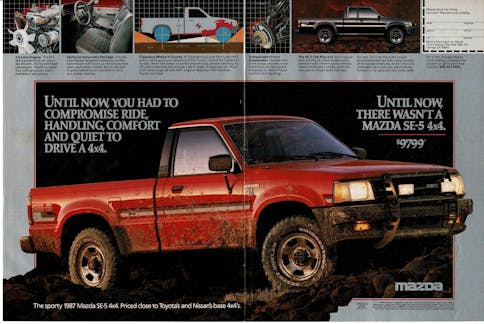
While the Buick was a victim of engineering mandates of the era, apparently Mazda shot themselves in the foot with a half-baked design made with no third-party intervention! Check out Arthur Hill’s fascinating tale of deceit:
“In 1988, as my family grew to 4, I needed to trade my Toyota 4X4 Pickup for one of the new ones with actual back seats to hold the two children. Unfortunately Toyota did not produce one until a few years later, but Mazda had a very nice looking B2600 4X4 that had back seats. This truck had the worst engine I ever had to deal with. I quickly discovered that if you really put your foot into it under a load, the engine would stutter and almost stall. Many trips to the dealer failed to solve this issue.
Finally a mechanic took me aside and admitted that Mazda rushed the truck into production without having an engine big enough, so they used a Mitsubishi 2.6 engine instead, but to make it easier to work on for their service people, they adapted their own accessories including the carburetor. Under load the only way the engine could get enough fuel was to link both barrels together all the time.
Needless to say, Mazda dropped this truck and you never see any on the road. Terrible truck with a terrible engine, but the actual Mitsubishi 2.6 engine was probably fine in their own vehicles.”
Mitsubishi 4G54/Chrysler HEMI 2.6-liter four-cylinder

No, not that Hemi. Or that one. We’re talking about the hemi-headed Mitsubishi 2.6-liter used on the Chrysler K-car and its derivatives. Chris Harshman said that the “worst engine I ever had was a 4-cylinder Mitsubishi engine in my 1982 Dodge 400. I used to joke with my friends that I could accelerate from 0-to-35 in 12 seconds.”
Subaru boxer flat-four/flat-six
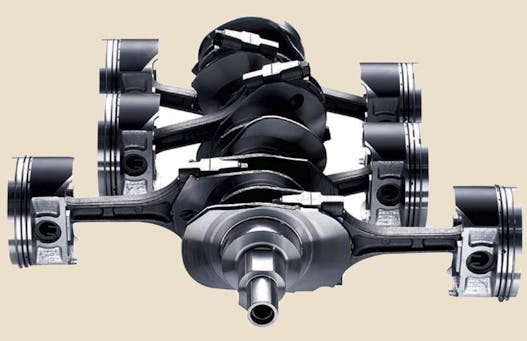
BobJ chimed in with one of the more offensive engines in modern history: the head gasket-munching Subaru boxer. But unlike other stories here, he made the same mistake twice.
“Had a 2005 and a 2010. Both blew head gaskets. Out of warranty but I complained and Subaru of America paid for half. Everyone complains about poor head gasket design & construction but I also wonder about open deck block design.”
GM 2.4-liter Ecotec four-cylinder
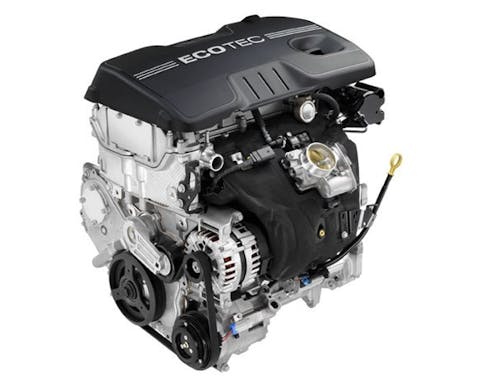
Hagerty Community member Rob keeps us in a more modern era, with a problem with the Ecotec 2.4-liter mill in his 2010 Chevrolet Equinox.
“Here’s a counterpoint for everyone who marvels at the reliability of modern cars. Launched just after GM’s bankruptcy, I should have known they probably cut corners on validation but couldn’t pass up a nice sized SUV that cracked 30 mpg.
It went through numerous high pressure fuel pumps. The timing chain tensioner went bad. The variable cam timing system went out and timing chain would slap like crazy when you started it. It had a bad heat treat on a pin in the cam shaft. Started burning over a quart of oil every 1000 miles and was rebuilt under warranty just before 50k Powertrain warranty expired. And I never got anywhere near 30 mpg on the highway.”
Ford 1.5-liter Ecoboost four-cylinder

Steve notes that his 2015-vintage, 1.5-liter, Ford EcoBoost engine is “absolute garbage compared to every other engine I’ve had the pleasure (or displeasure) of operating.” His example needed a new long block after 60,000 miles, and this helped him create a visionary notion about the EcoBoost’s promise of power and efficiency in a single engine:
“The reality is that you can’t have it all and ultimately lose out due to the extra complexity and stresses on the engine. I am not sure if the other EcoBoost variants are like this and I don’t care to find out personally.”
Holden Starfire four-cylinder

Mr. Nigel Utting takes us to the Land Down Under, reminding us that “GM Holden came up with an abominable 1.9 liter 4 cylinder named the Starfire.” The lack of power likely made Nigel’s comments far from the minority, with fuel economy numbers there were disappointing to boot:
“Based on a cut down six, this god-awful thing used to have a couple of seconds delay between hitting the accelerator and responding, a bit like downloading revs of the internet with a slow connection.”
Ford Cologne V-6

While Ford of Germany contributed greatly to the automotive landscape in Europe and the USA alike, Patrick Abbott reminds us that the Cologne V-6 wasn’t necessarily one of them. His example “regularly destroyed rocker arm assemblies and main bearings” while Richard Eaton was truly cursed with a lemon:
“I purchased a new, 1990 Ford Ranger with the 2.9-liter V6. Should have seen this coming when the transmission had to be replaced 4x for porous castings, and then both heads cracked under a recall. But then less than 50k miles after those heads they were again cracked sufficiently to turn the oil white in 1000 miles. Never again will I buy Fords.”
The Oldsmobile Diesel V-6

TerryTwoUtes picked up an example of an engine that history hasn’t looked too favorably upon: the Oldsmobile diesel.
“My parents had a ’78 Oldsmobile Delta 88 diesel, the dreaded 350 diesel engine derived from the gasser engine. After about 5–6 blown head gaskets and even one full short block replacement, it was finally traded off. Only good thing was GM trying to save face and all of those repairs were covered under extended warranty.”
Cadillac HT4100 V-8

Speaking of obvious punching bags, Hagerty Community member Coffeyclan reminds us all how low Cadillac went upon the introduction of this “High Technology” motor:
“The worst was Cadillac’s HT4100 engine. Acceleration was at a snail’s pace, the timing chain went bad twice, etc, etc, etc. I sold this car before the warranty ran out!”
Detroit Diesel “Fuel-Squeezer”

The one, the only, the legendary DUB6 threw us a curveball, thanks to his experience driving commercial trucks:
“In the mid-’70s, I drove longhaul truck for a fleet operator that leased their rigs. Most of the trucks had Cat engines and either 13 or 18 speed transmissions. As fuel prices rose during the embargo period, the leasing company offered up a Kenworth needle-nose with Detroit Diesel “Fuel-Squeezer” and 6 speed tranny to test out. Guess who was low enough on the pole to get picked to drive it for what was supposed to be 3 months?
That thing was so gutless – and the gear ratios so far apart – that even on the slightest grade, I was lucky to be able to manage 20 mph, loaded. Empty, it might get to 50 downhill, but then of course, there would be a corresponding upgrade. Fuel squeezing? Hardly. Most of the big Cats were averaging 4.5-5 mpg. This little longnose managed about 6.0 – mostly because the throttle had to be just about wide open all the time just to maintain forward momentum.
Maybe would have been fine for a flat-land operation, but in the mountainous WEST, it was pretty sad. My trips started taking up to twice as long as was projected, and several appointments would be missed every week. After about 8 weeks, the truck went back to Kenworth!”
Toyota 18R-C four-cylinder

Let’s be clear on one thing: This isn’t a slam on all Toyota 18R engines, only the California-spec motor aimed at reducing emissions. Pete notes that the 18R-C was never designed for durability:
“I am a car guy and former auto mechanic. By far the worst designed and engineered engine was a Toyota 18R-C. I have had experience with more than one, and they all burned valves every 15,000 miles even after Toyota did a factory upgrade to “fix” the problem (which it did not). I drove the car for 75,000 miles and did 5 valve jobs before I woke up and sold it for $500, it did have a good clock though.”
Chevrolet 2300 four-cylinder

Of course the 2300 motor would make the list, as there were three negative comments to this effect. It didn’t help that the early Vegas weren’t the most reliable dance partner, and NCB chimed in with a personalized tale of ownership:
“I owned a 1973 Vega GT. Yes, I’m dating myself. First, and worst car I ever owned. Engine overheated due to poor cooling system design which led to scored cylinder walls in the aluminum block. It drank oil! Bad valve stem seals and “rusting away to nothing in 5 years” were icing on the cake. MotorTrend Car of The Year in 1971!”

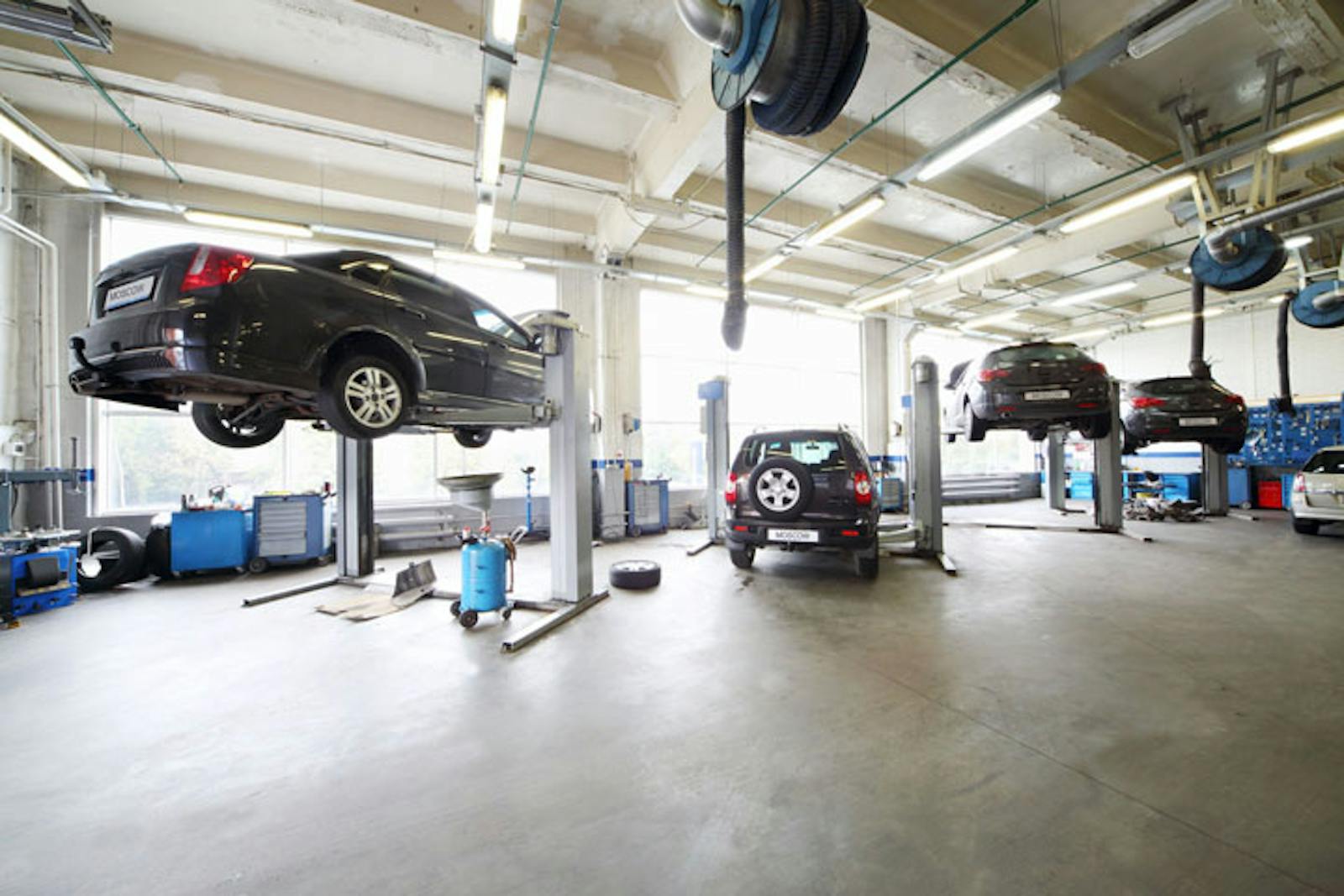
I owned a new 1969 Ford Galaxie 500 with the base 302 2 barrel. Thought by changing the oil and filters three times more often than recommended in my owner’s manual I’d extend the life of my intended long-term vehicle. The valve guides would self-destruct on an annual basis which was happily dealt with at no charge by my dealership. After three years I made the easy decision to unload this Ford for something that I could trust on lengthy road trips. At the time when the 3rd and last familiar underhood ‘clanking’ started, I was approximately 60 miles away from my intended destination (at highway speed). I said to myself keep on going and let destiny call the shots. Must admit one thing, that 302 kept running even though the Ford shop mechanic couldn’t believe what he saw when the cylinder heads were removed!
Porsche Boxter, boooom needs another $10k motor!
My neice had a Boxter and when it had trouble, the dealer said, we just replace the engine. I think they knew she had money.
Camshaft lobe went flat on ’75 Firebird 400.
Sorry, meant to say it was at 32k.
I had a low mileage used Pontiac Sunbird, that was loaded with all the options. Unfortunately it had the Brazilian 1.8 L 4 cyl turbo engine. My wife drove it a mile to work each day. I would get home from work and the car was not in the driveway. My wife would say as I came in the door, “my car is on xxx street and it won’t start.”. Then the next day, “my car is on CCC street and it won’t start.”. I took it to the dealer and they “fixed” it. When I got it back I heard, “the car is on QQQ street and it won’t start.” When merging into traffic, as soon as you enter the highway, the motor shuts off. Then it started destroying itself. All told, they changed the Turbo twice, the head once, two brake jobs in one year for warped rotors, etc. One day I came home and my wife said,” the car smells funny.” so I went out and started it. There was so much smoke and antifreeze around the car all you could see was one tail light. I called the dealer to have it towed in and they later told me they were going to replace the Engine. By this time I had replaced the tires. (more on that later). They put the car in the back of the lot, and every time I drove by it was still there, eventually covered by winter’s snows. They even plowed the lot and deposited that snow on the car. It eventualy became known by my kids as “The hill”. By this time I had hired a lawyer and had bought another car for my wife. Four months later they called to tell me it was ready for pickup. I went down with a friend to get it and was met in the service dep, by the owner, the service Mgr. and two mechanics informing me that I was not to come back. I told him that I will take it on the highway and see if it still shuts off, which it did. I went back and they said it will now cost me because the warrantee was expired. While the car was in the Snow “hill”, it accumulated 12,000 miles. This is where the new tires fit in. When they changed the tires right before being consigned to the back lot, they wrote the mileage on the receipt. I had the car for 3 years, 6 months of actually driving, and the rest split between my back yard or the dealer lot. My lawyer looked at my documentation, and she was floored by the amout of records I kept and how the dealer just ignored me. I mentioned that we should go for triple damages for the dealer’s attitude and refusal to fix it. Three days before the court datehis lawyer called my lawyer and offered to buy the car back for what I paid, reimburse me for any repairs I paid for, pay my lawyer fees, and remove the car from my lawn within two days. My lawyer had contacted a previous owner and she said “Oh, I traded it in because it was in a flood.”. Oh I almost forgot, Every time we drove past a Burger King the wipers would sweep one time… never anywhere else. My kids thought it was haunted.
Please… Please… Please…
Paragraphs are our friends!
An article about a bunch of whiners complaining.
Keep up the great work Hagerty
Your list could have included the V6 that came with my 1986 Buick Electra. The car was a big fail on so many levels.
Yeah that era was horrible. I was working in a Buick dealership in the 80s as a mechanic and saw nothing but problems with that V6. Good customer pay work though
I seem to recall commenting on this topic before. I bought a brand new 1965 bright red Honda S 600 2-seater convertible. I’d seen it in the store window of an NSU dealer (there being no Honda car dealers as of yet) and it looked so gorgeous I hurried back to get one. My good choice was soon confirmed in an article in Canadian Track & Traffic, which claimed great relaibility would be a compelling feature.
Well, in fairly short order, I completely blew 4 engines. All of them were replaced at no cost to me, but my dad, usually, had to come out (sometimes in the middle of a winter night) on rescue missions. (I must have been able, each time, to find a phone booth.) The aluminum slant-four engine had needle bearings, hemi heads, four separate carbs, and a handbook recommendation that gears be changed at 8,500 rpm, although you could readily spin it to 12,000.
I sold the car, having bought a Morgan 4/4 1600 C as my daily driver, and soon I heard that the buyer had to get a fifth engine. I read an interview some years later with the author of that Track & Traffic review, who said he was sorry for S 600 buyers who may have been influenced by what he wrote. He also admitted to lying. I respect that.
It gradually dawned on me that all the S 600s out there (Canada, Switserland, and Japan), were test cars.
I was a test car driver.
That is contradictory to everything I’ve read about the S600. The trouble you had probably stemmed from lack of maintenance and use of incorrect oil. The lubrication system on these cars was the same design as used in motorcycles, with the gearbox and crankcase using a common sump. As a result, engine failures occurred when “conventional” detergent oil was used.
So I have had 3 of these engines. 1984 Oldsmobile Cutlass 4.3l V6 diesel, only problem as a blown head gasket – did not know that the heads needed to be re-torqued at 50k. Iron Duke in 1987 Cutlass, ran forever but need a warranty replacement of Timing Chain and gears too noisy and quiet after update. V-6 3.8l Buick – great engine, even turbo them – so there were worst engines. Problem with GM cars is that they were not good with quality in 1980s and 90s. Had a 2009 3.6l V-6 Buick that I traded in because the timing cam was not good with the revised fuel injection for that year, replace with 2013 SRX & same engine much better.
How did this article miss the infamous Cadillac 8-6-4?
Wow, seems like the only American car company to produce good engines was AMC
AMC fans must be loving this article.
Vega motors were the worst
My worst engine was a slant 6 Mopar.
Impossible…
I bought a 1972 Vega GT in the late 70’s for $550 from the original owner. The car was in excellent shape. It had a nice instrument cluster and posi-traction. Mt Dad owned a body shop. One of the body men had a Vega station wagon out back of the shop. He was going to make it into a Vega truck! He told me to get the radiator out of it and put in my Vega. The radiator was about 50% larger and bolted right in. My Vega never ran hot after that. She did drink a bit of oil, of course. Never had any rust. After driving for 3 years I never had any problems, other than the oil, then sold it for $1000. It still looked like new inside and out. Can’t complain!! Then I bought a 1979 Buick Skyhawk Coupe with the 3.8L V6. It felt like a Vega on steroids.
The 1981 Cadillac 4-6-8 L62 engine was an interesting concept that had it worked you may have seen that idea had it worked we may have seen done on other car engines.
I find it interesting that with American V8s being so plentiful, that there are so few dogs identified. The Diesel Olds and the HT Caddy are well known, and together with the Cimarron almost sunk Cadillac.
I recall a 2007 Suburu flat-four of mine, my friend the Subaru mechanic recommended timing chain and head gaskets be routinely replaced every 50-60,000 miles. The rest of the car was so good owners tolerated this bother and expense.